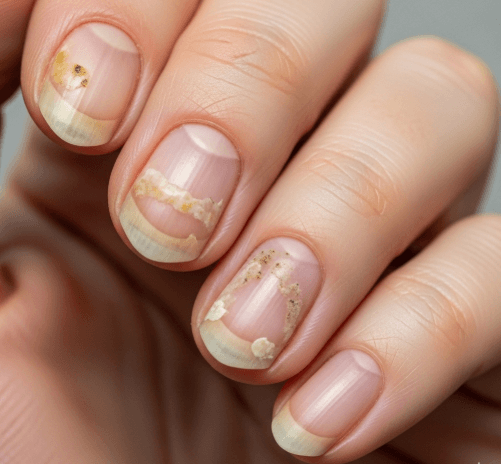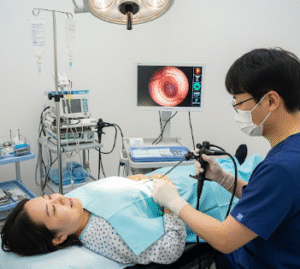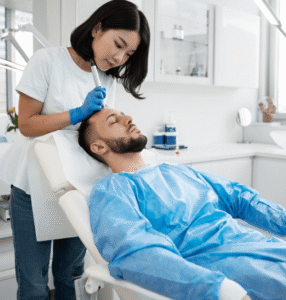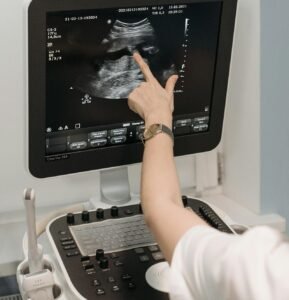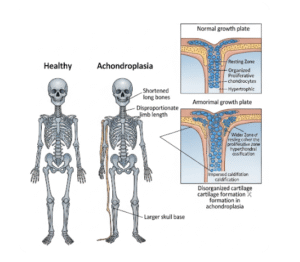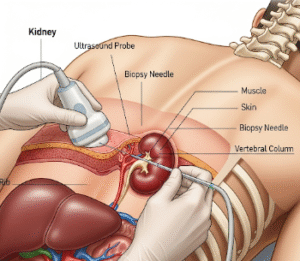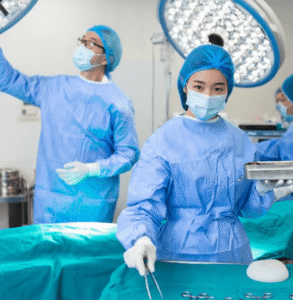What It Is
Defining Nail Dystrophy
→ Nail dystrophy refers to abnormal changes in the appearance, shape, texture, or growth of fingernails and toenails.
→ It can be caused by trauma, infection, systemic diseases, inflammatory skin disorders, or genetic conditions.
→ Signs of dystrophy include thickening, splitting, ridging, pitting, discoloration, crumbling, or nail plate deformity.
→ In Korea, dermatologists and nail specialists emphasize comprehensive evaluation to determine the root cause, because treatment depends heavily on the underlying diagnosis.
Key Characteristics
- Nail thickening (onychauxis)
- Nail crumbling or splitting
- Horizontal or vertical ridges
- Pitting or depressions in nail surface
- Discoloration (white, yellow, brown, or black streaks)
- Abnormal growth patterns (lifting, curvature, or loss of nail)
Why It’s Done
Main Reasons for Nail Dystrophy Evaluation
➡ Accurate Diagnosis – Many different conditions cause similar nail changes; evaluation clarifies the cause.
➡ Distinguishing Infection from Disease – Fungal infections mimic psoriasis or lichen planus; tests confirm the difference.
➡ Excluding Serious Conditions – Some nail changes may indicate melanoma, systemic illness, or autoimmune disease.
➡ Tailored Treatment – Therapy is only effective if underlying cause is identified.
➡ Cosmetic and Functional Concerns – Nail appearance and comfort are important for daily life.
Alternatives
Non-Medical Options
- Observation → Monitoring mild changes that may resolve after trauma or temporary illness.
- Protective Nail Care → Keeping nails trimmed, avoiding trauma, using gloves/shoes.
- Moisturization → Reduces brittleness in age-related nail changes.
Medical Alternatives
→ Without full evaluation, treatment may be started empirically:
- Topical Antifungals → If fungal infection strongly suspected.
- Oral Antifungals → For thick, widespread dystrophy (though risky if misdiagnosed).
- Topical Steroids → For suspected inflammatory nail diseases (psoriasis, eczema).
- Nail Surgery → Avulsion or biopsy if conservative care fails.
But without proper evaluation, misdiagnosis is common.
Preparation
Before Nail Dystrophy Evaluation in Korea
➡ Detailed Medical History – Includes trauma, infections, systemic diseases (thyroid, diabetes, psoriasis).
➡ Family History – Some dystrophies are hereditary.
➡ Medication Review – Chemotherapy, retinoids, and antimalarials may alter nails.
➡ Lifestyle Factors – Footwear habits, sports, manicure/pedicure history.
➡ Patient Counseling – Patients informed that nail growth is slow, so treatments may take months.
How It’s Done
Step 1: Clinical Examination
- Dermatologist inspects all 20 nails for pattern, distribution, and severity.
- Looks for skin and scalp signs of psoriasis, eczema, or lichen planus.
- Identifies trauma-related causes (shoe pressure, repeated injury).
Step 2: Laboratory and Diagnostic Tests
→ Korea emphasizes precision testing to confirm causes.
- KOH Microscopy and Fungal Culture → For suspected nail fungus (onychomycosis).
- Histopathology (Nail Biopsy) → In resistant cases or suspicion of nail psoriasis, lichen planus, or tumors.
- Dermoscopy (Onychoscopy) → Handheld scope reveals subtle changes (melanonychia, pigment streaks).
- Molecular Testing (PCR for fungi) → Available in advanced Korean clinics for rapid, accurate fungal detection.
Step 3: Imaging and Blood Tests
- X-rays if underlying bone involvement suspected.
- Blood tests to check for systemic diseases (thyroid, lupus, connective tissue disease).
Step 4: Differential Diagnosis
→ Common conditions assessed during evaluation:
- Onychomycosis (fungal infection)
- Psoriasis (pitting, oil spots, onycholysis)
- Lichen Planus (thinning, ridging, scarring)
- Trauma-related dystrophy
- Systemic disease-related dystrophy (anemia, thyroid disorders, diabetes)
- Nail tumors (benign or malignant, e.g., subungual melanoma)
Step 5: Counseling and Treatment Planning
- Patients receive a clear explanation of the diagnosis.
- Options presented: topicals, oral medication, laser, nail surgery, or supportive care depending on cause.
Recovery
Immediate Outcomes of Evaluation
- Patients gain clarity about whether the nail changes are fungal, inflammatory, traumatic, or systemic.
- Unnecessary treatments (like wrong antifungals) are avoided.
Long-Term Outcomes
→ With targeted care:
- Fungal infections → treated with antifungals or laser therapy.
- Psoriatic nails → improved with steroids, biologics, or systemic drugs.
- Trauma-related nails → managed with footwear changes and trimming techniques.
- Systemic disease-associated nails → improve once underlying disease is treated.
→ Nail improvement visible only as new nail grows in:
- Fingernails → 4–6 months
- Toenails → 12–18 months
Complications
Risks Without Proper Evaluation
- Misdiagnosis → Treating psoriasis as fungus or vice versa.
- Delayed Cancer Diagnosis → Subungual melanoma mistaken for benign pigmentation.
- Worsening Deformity → If underlying cause not addressed.
- Unnecessary Drug Risks → Oral antifungals taken without real fungal infection.
Risks With Evaluation
- Biopsy Discomfort → Mild pain, rare scarring.
- False Negatives in fungal culture (if poorly collected sample).
- Temporary Worry → Patients may be anxious awaiting results.
Treatment Options in Korea
Why Korea Excels in Nail Dystrophy Evaluation
➡ Advanced Diagnostics – Use of dermoscopy, PCR fungal tests, and nail biopsies.
➡ Integration of Dermatology and Podiatry – Many clinics specialize in both skin and nail care.
➡ Focus on Cosmetic Outcomes – Cosmetic dermatology improves nail appearance after medical treatment.
➡ Access to Modern Therapies – Lasers for fungal nails, biologics for psoriasis, and advanced antifungals.
➡ Patient Education – Strong culture of counseling and prevention guidance.
Patient Experience in Korea
- Evaluation done in outpatient dermatology clinics.
- Comprehensive testing available in same visit or within days.
- Patients often receive before-and-after progress tracking photos.
- Custom treatment kits (antifungal solutions, nail care tools, moisturizers) commonly provided.
Conclusion
Nail dystrophy evaluation in Korea is a comprehensive diagnostic process that ensures accurate identification of underlying causes.
Through a combination of clinical examination, fungal testing, nail biopsy, dermoscopy, and systemic screening, Korean dermatologists deliver precise diagnoses and personalized care.
By integrating medical expertise, cosmetic dermatology, and advanced technology, Korea provides some of the most reliable and patient-centered evaluation systems worldwide.
For anyone struggling with thickened, discolored, or deformed nails, evaluation in Korea offers both clarity and a clear path to recovery.

